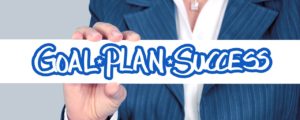The new financial and political challenge known as “Brexit” is a good reminder that your plan for the late, or second, stage of your retirement should not depend on the stock market.
In the two days following Britain’s vote to exit the European Union, the Dow Jones Average plunged 800 points. The markets have since rebounded, but here’s the question you ought to ask yourself:
Will I feel secure in my retirement if my savings are fully invested in financial products that swing so wildly and unpredictably?
If you haven’t had that conversation with your spouse or partner about how much of your portfolio ought to be in the market and how much in guaranteed income, now is a good time.
Market volatility vs. retirement stability
It might go something like this:
“Let’s look over our options. We’re 65 and we have $100,000 that we can put in the market, and use the balance of our savings and Social Security to generate income for our early retirement years (Stage 1). Hopefully, the $100,000 would grow to provide more income in our late retirement years (Stage 2), and be available as a legacy for the kids.
“Or, under new IRS rules, we can use $100,000 from our rollover IRA to buy future guaranteed income through an income annuity called a QLAC. When we’re 85, depending on how we allocate the QLAC purchase between our accounts, we’ll each get a check for $20,000 to $25,000 every year. These checks will continue for the rest of our lives.
“We should talk to the kids, too. It’s our decision, but I’d like them to know what we’re planning. Do they want us to invest in the market or buy guaranteed income, which will definitely be available to pay for the medical and other expenses that are likely to occur?”
If you – and your children — coolly analyze the numbers and the two stages of retirement, the decision will be easy.
Planning a two-stage retirement
In the first stage of retirement, you might be able to ride out plunges in the stock market until it recovers. You will have some of your savings invested in bonds and your expenses should be more predictable. You aren’t paying off college tuition, your home mortgage is low and you aren’t spending as much on cars, clothing and the like. You also might enjoy earning extra cash as you work part-time.
Expenses are likely to increase as you hit your 80s, and the second stage of retirement. Medical costs often rise and you might want to hire someone to help you around the house. The second stage is the worst time to watch your savings fluctuate, because you have fewer options to replenish them.
As you and your spouse have this conversation, don’t forget the implications of taxes and fees. Once you buy the income annuity out of your rollover IRA account, you don’t pay taxes on it until you start getting paid – and that income might be offset by deductible expenses. You also won’t be paying fees to an advisor to sell stock or otherwise manage your investments.
It’s never too early to have the conversation as you mull over your options for a two-stage retirement. Talking about it now will help you avoid the conversation none of us wants to have: “Kids, we’ve run out of money. Can you pay our bills?”
Learn more about planning for a two-stage retirement by viewing our new video. Sam and Sally will walk you through the process.